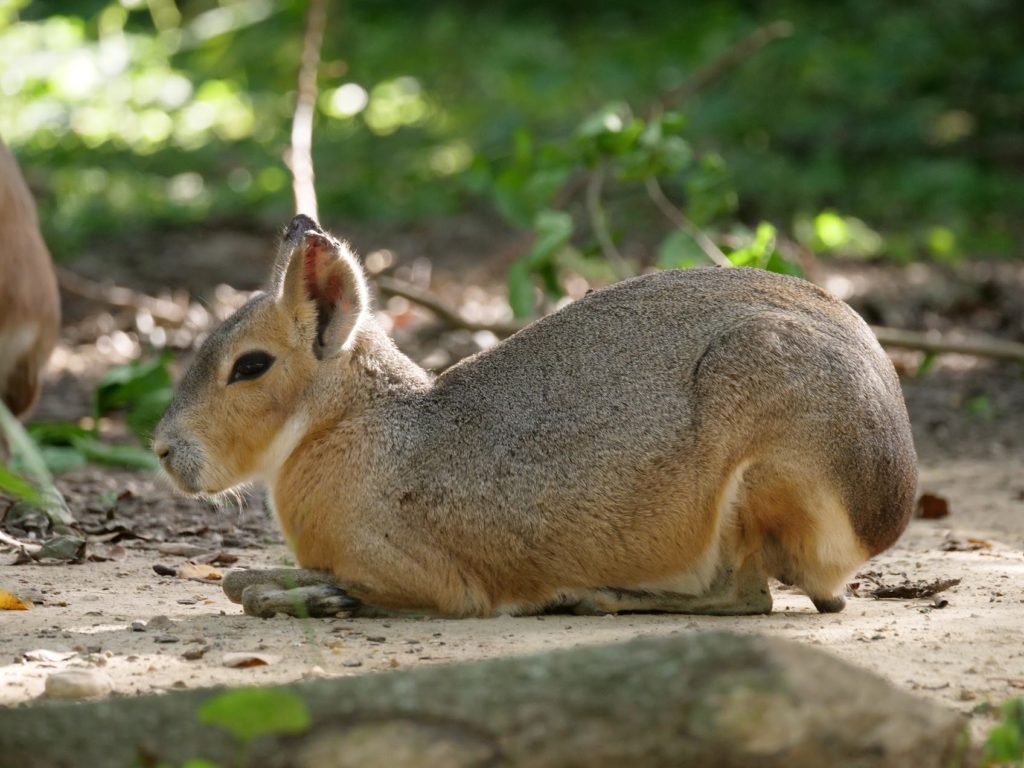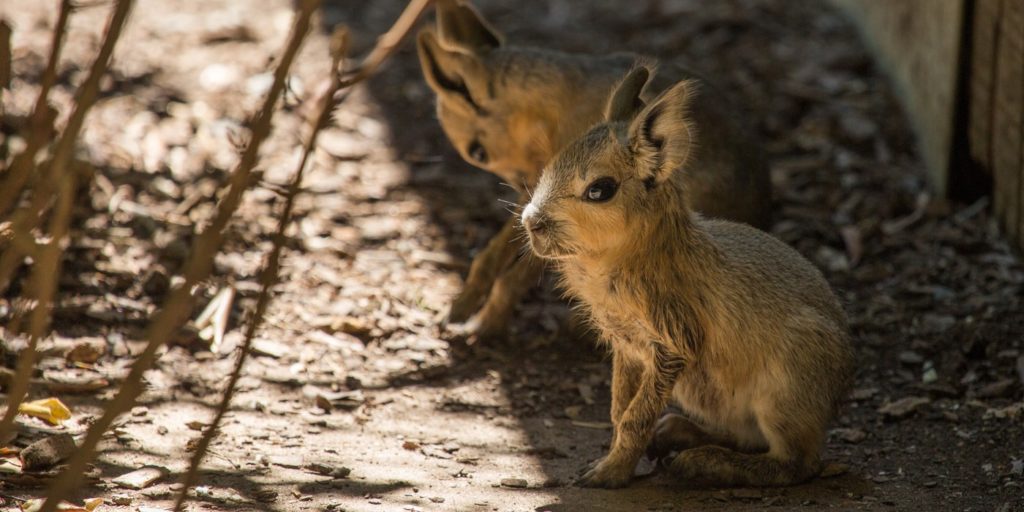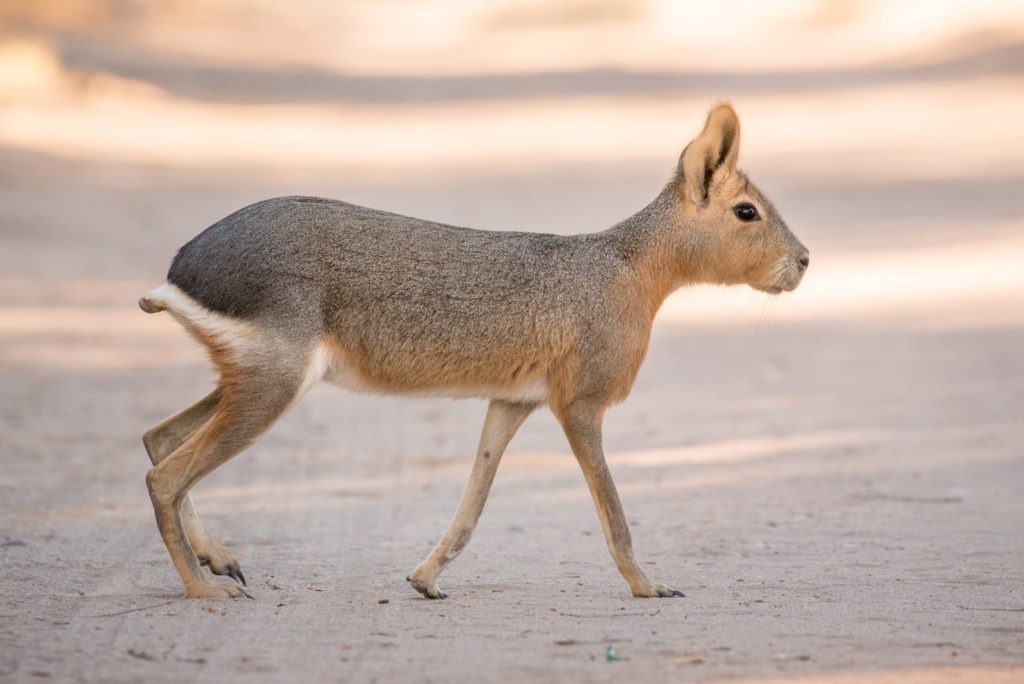Patagonian Maras
This rabbity rodent of South America’s grasslands is a common sight in zoos but has one of the strangest social structures we’ve talked about in mammals. What makes this strictly monogamous-till-death, pair-bonded, troupe-travelling mammal SO antisocial? How does that work, and what else have we been missing all this time? Nicole shares about the Patagonian Mara (Cavy) in this episode of the Best Biome.
Main Notes and Takeaways
- Family Caviidae has 14 species in it including: guinea pigs, mountain cavies, and two species of maras (in their own subfamily).
- Prefer wide-open steppe habitats.
- When first born, they are highly social, but by four weeks old almost all play behavior stops.
- Primary predators include: foxes, hawks, grisons, and pumas.
- When they spot a predator they will often perform a behavior called stotting where they leap into the air to show how fit and hard to catch they are.
- Maras have a bizarre social structure (see below for more)

Our Favorite Notes from This Episode
Strange Social Structure
Patagonian Mara pups are extremely social and constantly cuddle and play in their underground dens. Once they leave the den however they rarely interact with their siblings, parents, and especially not other maras outside the family unit.
While lone males will actually form bachelor groups, mated males never tolerate other adult males near their mate. Males will follow the females as they roam and actually use her as a “mobile territory”. He will mark the ground his mate with anal gland secretions not unlike “hyena butter” (which we’ve talked about before). He will even “claim” his female by peeing on her back. If other males get within about 10 meters (30 ft) of the pair, he quickly gets chased off. And so, this little duo roams the steppe close to other pairs but not too close. Their bond is quite strong, with males being seen helping out their mates when injured or always being on the blind side of a mate who lost an eye.
Despite the adults being fairly antisocial outside of their pair bond, it’s quite common for several pairs to share a den when raising pups. They do take turns though, with only one pair at the den at a time. The mothers also only feed their own young and will actively attack strange pups.

Why the Strangeness?
Why do Patagonian Maras start off highly social, become so bonded to one mate to the point where they don’t interact with the rest of their group, but then come back together to raise their young in huge communal dens? Well, we don’t know for sure. The cuddling that pups do likely helps them stay warm at a time where they can’t control their body temperatures well. All the playing and other interactions probably help them learn each other’s scents and build up muscles for when they eventually venture outside the den.
Once out in the world, avoiding predators and finding food becomes the most important factors in their lives. Because of this, pups are forced to grow up quickly and become much less social. Mara pairs will call to each other often and follow each other around as they take turns eating and keeping watch for predators. Someone is always watching and separate pairs will stay within calling distance of each other. This hyper-vigilance can also help explain why they come back together to raise pups. More eyes means more chances to spot danger and much greater success in pup raising.
The male’s defensiveness of their mates arises from the fact that in the wild maras usually only raise one litter per year. Females will only go into heat and be receptive to his approach for about 30 minutes every 3-4 months. He’s nothing if not patient.

Sources/Further Reading:
- Genest, H. & Dubost, G. (1974). Pair-living in the Mara (Dolichotis patagonum z.). Mammalia 38(2), 155-162. https://doi.org/10.1515/mamm.1974.38.2.155
- Ganslosser, U. & Wehnelt, S. (1997). Juvenile development as part of the extraordinary social system of the Mara. Mammalia 61(1), 3-16. https://doi.org/10.1515/mamm.1997.61.1.3
- Animal Diversity Web. Patagonian mara. University of Michigan. https://animaldiversity.org/accounts/Dolichotis_patagonum/
- Cavy. Encyclopaedia Britannica. https://www.britannica.com/animal/cavy
Did you spot an error or have questions about this post? Email Nicole Brown.
